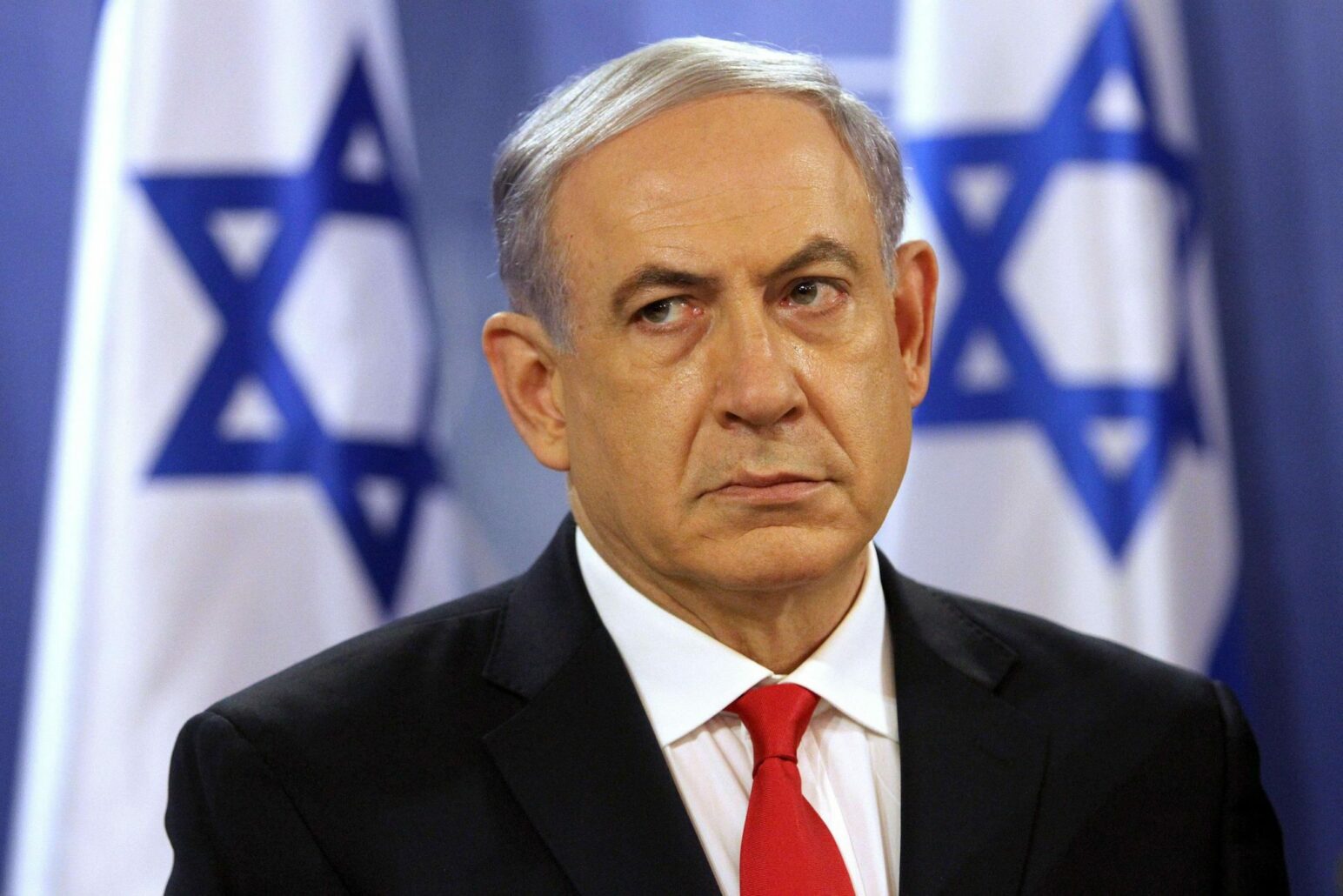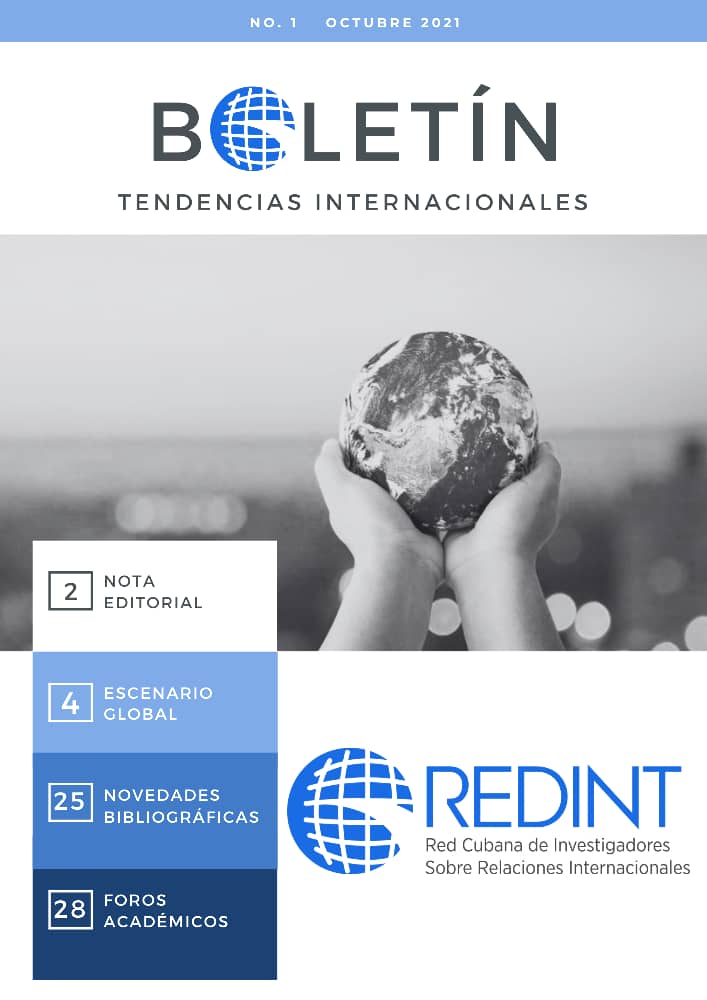Oceans Apart: A comparison of the medical and political responses to COVID-19 in Australia, New Zealand, and Cuba
A comparison of these three nations during the pandemic years of 2020 and 2021 demonstrates that Cuba and New Zealand, which pursued policies in their national interest, maintained a firm, unified commitment to prioritising the protection of their citizens in both a medical and socioeconomic sense
University of Melbourne
The COVID-19 pandemic has demonstrated that healthcare and politics are inextricably linked. Indeed, the capacity of nations around the world to respond to the crisis of the pandemic and care for their citizens has been directly influenced by political and geostrategic interests. The three island nations of Australia, New Zealand and Cuba have recently been compared due to their initial success in controlling the COVID-19 pandemic, enabled by common charateristics such as established and robust public healthcare systems. While medical responses have been discussed quite widely, the exploitation of responses to COVID-19 as a political tool has not.
A comparison of these three nations during the pandemic years of 2020 and 2021 demonstrates that Cuba and New Zealand, which pursued policies in their national interest, maintained a firm, unified commitment to prioritising the protection of their citizens in both a medical and socioeconomic sense. Genuine, honest government actions built confidence and trust, enabling both countries to weather internal and external challenges. In Cuba this includes the ongoing assault of the US blockade and deliberate attempts to destabilise the island. The Australian experience, by contrast, is quite different. Squabbling between the nation’s two major political parties, opportunistic political stunts, neoliberal concessions to business and agenda-setting by the conservative media confused and divided the population. Lack of trust and political motivation led to a chaotic and inefficient response to the pandemic that saw inequities in vaccine distribution across Australia’s different states, the emergence of a far-right anti-vaccination movement, extended lockdowns, civil unrest and escalation of geopolitical tensions with China.
Cuba: Success and solidarity against adversity
Cuba, as a socialist nation and society, predictably implemented policies in response to the COVID-19 pandemic that were in the best interests of the general population. This political will to care for the nation’s citizenry manifested itself as early as January 2020, when the Cuban Ministry of Public Health established a series of national training programs involving over 95,000 doctors and 84,000 nurses to diagnose and treat COVID-19.[1] Additionally, revolutionary mass organizations such as the Federation of Cuban Women and the Committees for the Defense of the Revolution assisted in an awareness-raising campaign, ensuring that citizens across the island were well-informed about the dangers of COVID-19 and how to protect their communities.[2]
By March 20, 2020, the number of cases started to increase in Cuba, and President Miguel Díaz-Canel announced the implementation of a series of strong measures to halt the spread of the virus. This included social distancing, the expulsion of tourists and foreign students, and full payment of wages for all Cuban state workers for the first month of lockdown, after which workers received 60% of their wages for the duration of the pandemic.[3] Finally, the rationing system already well-established in Cuba was expanded to ensure that disadvantaged neighbourhoods had access to essential sanitary and food products.[4] These wage and resource subsidies were subsequently expanded to single mothers and other carers of children, as well as the elderly, ensuring that as many Cubans as possible, and particularly vulnerable sectors of society, could weather the pandemic. This extensive social security net reflects the benefits of the Cuban socialist ideology and system in times of crisis, in which community wellbeing and solidarity is prioritised over economic or political interest.
New Zealand: The island that eliminated COVID-19
Australia and New Zealand bear many similarities with Cuba. While clearly capitalist in their economic structure, both Australia and New Zealand developed strong, electorally viable Labour parties with considerable union and socialist influence for much of the 20th century. As a result, governments in both countries provide coverage
for basic doctor’s services, free public hospital care and subsidies for essential medication.[5] Both countries spend a bit over 9% of their GDP on healthcare and while it is the large government-funded public hospitals that are renowned for their quality and innovation, there are long waiting lists.[6] Admissions are made on the basis of urgency as government funding doesn’t ever meet the need of the population adequately.
However, in both countries there is also a second tier of health services. Private health insurance is available for those who can afford it, offering coverage for out-of-pocket fees required to have your own choice of doctor and access to private hospitals for faster access to nonemergency services.[7] About 30% of New Zealanders and 45% of Australians pay for private health insurance and are encouraged to do so by government in a bid to alleviate pressure on the public system.[8] While there is universal health cover in Australia and New Zealand it is by no means equal for all, a symptom of the increasing neoliberalisation of society. Regardless, the government systems and networks already operating in both countries provided a similar organisational ability to Cuba’s, in responding rapidly and comprehensively to the COVID-19 crisis.
While distance and isolation were obvious advantages to Australia and New Zealand in their attempts to control the pandemic, New Zealand’s left-wing Labour Party presided over one of the most succesful COVID-19 responses in the world. As of November 5, New Zealand had registered just 7,343 cases and only 28 deaths due to the pandemic – this translates to just 1,510.71 cases per million people and 0.09 deaths per million people.[9] Prime Minister Jacinda Ardern, together with New Zealand’s Director General of Health, were directly involved and led the strategy of epidemiological control in the country, offering regular press conferences with updates on new measures, daily case numbers, and other changes to the national situation.[10] In January, a month before the first cases appeared on the island, the National Centre for Health Coordination was established to manage the response to the COVID-19 pandemic. New Zealand’s response to COVID-19 was characterised by one of the harshest and well-followed lockdowns in the world, though not the longest. Social distancing, bans on public gatherings and the closing of businesses were all observed and, generally speaking, the vast majority of citizens adhered to the epidemiological regulations.[11] So effective was the response that by June 8, 2020, New Zealand had eliminated COVID-19 in the country, and all areas of the island returned to the closest thing possible to normality on June 11.[12] The new chief objective of the government was to continue defending New Zealand’s borders and prevent any new cases of COVID-19 from entering the national territory.
A significant reason behind New Zealand’s success was the fact that the left-wing Labour Party in power at the time of the pandemic had developed many progressive policies, including a commitment to properly fund the nation’s healthcare system and implement a welfare-centric budget to support vulnerable members of society. Prime Minister Jacinda Ardern implemented a pandemic response that clearly tended to the health needs of the population, calling for citizen participation and solidarity – “with unity, with fast support, by looking after each other”.[13] The clear advantage of a left-wing and progressive government directing the national pandemic response could also be seen in the socioeconomic policies implemented by the Labour Party to support vulnerable sectors of the population. A national subsidy scheme was established to support small businesses and in particular their employees for the duration of the pandemic.[14] In total, some $62 billion dollars were set aside to this end, though issues relating to the misuse of these funds did emerge. Government funding was also put towards health and sanitation infrastructure, housing, water, and transportation during this period. An additional, and highly significant measure, was the New Zealand government’s decision to dedicate $56 million to support for indigenous Maori communities, which have been traditionally marginalised since colonisation and are some of the most vulnerable.[15]
The significant economic and social support provided to New Zealand’s people bears many similarities to the efforts of the Cuban government to first and foremost address the needs of the population, and protect not only their health, but also their economic and social wellbeing. Clearly, the experiences of Cuba and New Zealand align in their rejection of the politicization of the pandemic, in their call for solidarity, and in their resolute commitment to implementing policies that benefit the general populace, as opposed to specific interest groups.
Australia: Politicising the COVID-19 pandemic
Australia is perhaps the most interesting case study, in that, unlike New Zealand and Cuba, political disputes and the strategic manipulation of the COVID-19 pandemic led to an unprecedented and challenging situation for the country. Australia adopted many of the policies implemented in the other two countries, including social distancing, wage subsidies and harsh lockdowns to halt the spread of COVID-19. However, the political landscape in Australia led to a series of crises that have yet to resolve themselves. Australia’s political system involves a nationwide federal government and a number of state governments across the nation’s different regions. Currently, Australia is led at the federal level by the right-wing Liberal Party, whose support base lies among the business elite and upper class. However, a number of state governments, including the author’s state of Victoria, are led by the centre-left Labor Party.
While the Labor Party-led states opted for the policy of applying measures of containment and lockdown, right-wing Liberal Party-led states, in particular New South Wales, the most populous, advocated for open borders and loose restrictions to appease the business community and capitalist class.[16] The federal government actively worked to undermine the efforts of Labor party-led states in the fight against COVID-19, and particularly Victoria. This state endured the longest lockdown in the world in an attempt to contain the spread of COVID-19.[17] However, at every turn these efforts were undermined and manipulated by right-wing politicians looking to discredit their opposition. For example, in early September, when Australia’s slow vaccination campaign was still struggling to take off, the Federal government took over 100,000 Pfizer vaccine doses destined for the locked-down state of Victoria and gave them to New South Wales, a state governed by their right-wing ally.[18] This situation was all the more controversial considering that the government of New South Wales had earlier in 2021 refused to lockdown the state and its borders after a local outbreak emerged, instead bowing to the pressures of the business community who feared the associated loss of profit.[19] It was this outbreak that then spread to Victoria and other states, creating new challenges for the entire country.
This internal disarray was, similarly, reflected in the socioeconomic measures taken during the pandemic. The most notorious failure was a significant wage subsidy program, JobKeeper, that was designed to benefit large businesses and corporations under the pretense of financially supporting employees. Indeed, $6 billion dollars went to large corporations that in fact registered no economic loss, while many other business owners did not pass on the wage subsidies to their workers at all, instead keeping the funds for themselves.[20] Many industries were excluded from this program, including the cultural and artistic sector, meaning there was no universal support for workers across the country. Additionally, few targeted programs were implemented for the most disadvantaged sectors of the population. In particular, Australia’s indigenous population, described by the United Nations as living in conditions worse than much of the Global South,[21] had no special program created to support them during this time. As of November 5, Australia had registered 174,276 cases and 1,768 deaths, or 6,757.97 cases per million people and 69.99 deaths per million people.[22] This is still a commendable response to COVID-19 compared to many other countries. However, these numbers are still far higher than they should have been considering the wealth, previous experience and healthcare resources available to Australia.
Australia, unlike Cuba and New Zealand, provides a clear example of the dangers inherent in a divided political system in which differing parties vie against each other, placing political concerns above the wellbeing and health of the nation. This lack of unity and clarity contributed to a feeling of confusion, apprehension and mistrust among the Australian public.
Australia’s challenges were further exacerbated by a number of domestic factors that have been actively cultivated by the nation’s political class. A clear example is the intense media concentration that exists in Australia, with the ideologically far-right company Newscorp owning most sources of mainstream media, and free to publicise extremist and false information.[23] Newscorp publications disseminated vast amounts of disinformation attacking Australia’s vaccination campaign, the integrity of healthcare professionals, and the safety of vaccines, leading to the development of an anti-vaccination movement that took to the streets in late September 2021. Thousands of alienated individuals, many linked to far right movements and fuelled by the dominance of fake news and the precarious medical situation at the time, protested violently in the city of Melbourne against the healthcare measures being taken to protect lives.[24] Such a large disenfranchised sector of the population has provided fertile recruitment opportunities for right-wing organisations in Australia, another symptom of the nation’s failure to address the challenge of COVID-19 in an adequate way.
The healthcare challenges faced by Australia, particularly in the procurement and public acceptance of vaccines, were starkly different from the Cuban experience. A key component of Cuba’s efforts against COVID-19 has been the rapid and effective development of numerous vaccine candidates. Cuba’s biopharmaceutical expertise began in the 1980s, when Fidel Castro decided to focus Cuba’s scientific experience on this sector.[25] To date, the island has produced five different vaccines against COVID-19. In particular, Abdala and Soberana 02 are the most effective, and have been employed widely across Cuba in a very rapid and comprehensive vaccination drive. Currently, these vaccines have an efficacy of around 92 percent.[26] So experienced is Cuba’s state-led medical coordination that, by the end of the year, all Cubans will be fully vaccinated, and Cuba will be able to produce millions of doses each month for international use.[27] Currently, Iran, Nicaragua, Venezuela, Mexico, and Vietnam have approved one or more of the Cuban vaccines for use.
Regrettably, the United States has weaponised the incredibly challenging situation that Cuba faces, further tightening the blockade and specifically targeting food and medicine imports in a number of decrees that have made the impacts of COVID-19 all the more debilitating.[28] Clearly, and disturbingly, the United States government has turned healthcare into a new component of its strategy against Cuba, attempting to severely limit access to healthcare products and much-needed medication. In spite of these attempts at destabilization, Cuba’s government and people have resisted. The fact that Cuba can still manage a robust COVID-19 response in spite of these external challenges is impressive.
In Australia’s international context, the right-wing federal government utilised the COVID-19 pandemic as a means of building a new frontier of strategic dispute against China. At the behest of the United States, Australia called for China to be investigated for its handling of COVID-19, unilaterally and without any evidence singling out the Asian country.[29] This set off a diplomatic dispute that has resulted in China, Australia’s largest trading partner, sanctioning some of the island’s most important industries, and diplomatic communciations have been all but suspended. Australia, further cementing its role as a vassal of the United States, joined the AUKUS nuclear pact on September 15 as a deterrent against China, under which it will receive nuclear submarines from the United States and the United Kingdom.[30] Not only does this flagrantly violate the principle of the Pacific region as a nuclear-free zone, but it further demonstrates the fact that Australia and the United States have exploited the complex situation created by the COVID-19 pandemic to pursue their anti-China policies.
Conclusions
Cuba, Australia, and New Zealand are fascinating case studies when comparing the healthcare and political responses of different nations in the face of the COVID-19 pandemic. Cuba and New Zealand clearly demonstrate that progressive, left-wing governments that prioritise the wellbeing of the community and general population have managed to stage highly effective anti-COVID-19 campaigns in all aspects. Indeed, Cuba, which continues to suffer under the illegal US blockade, is all the more impressive in what it has achieved considering the additional challenges that this US policy has created. Australia, on the other hand, is a prime example of the dangers inherent in politicising healthcare measures, and the COVID-19 pandemic. Internal political disputes impacting directly upon the availability of vital medical goods like vaccines, the emergence of far-right movements, and heightened geopolitical tensions, all demonstrate the inherent tendency of right-wing governments to take advantage of and politicise the unique medical situation created by COVID-19, if it contributes to their economic and political objectives.
[1] Redacción Minsap, “Cuba fortalece el sistema de vigilancia para contener la introducción del nuevo coronavirus,” Ministerio de Salud Pública, published January 28, 2021, https://salud.msp.gob.cu/cuba-fortalece-el-sistema-de-vigilancia-para-contener-la-introduccion-y-diseminacion-del-nuevo-coronavirus/.
[2] Makand (@rain_on_your), “Inspired by the battles of the past, many students proudly say that COVID-19 has become their bay of Pigs (#EsteEsMiGiron),” Twitter, July 18, 2020, https://twitter.com/hashtag/esteesmigiron?lang=en.
[3] “Gobierno adopta nuevas medidas para enfrentar a la COVID-19,” Mesa Redonda, published March 2020, http://mesaredonda.cubadebate.cu/mesa-redonda/2020/03/21/gobierno-adopta-nuevas-medidas-para-enfrentar-a-la-covid-19-en-cuba-video/.
[4] Ibid.
[5] “International Health Care System Profiles: New Zealand”, The Commonwealth Fund, published June 5, 2020, https://www.commonwealthfund.org/international-health-policy-center/countries/new-zealand; “International Health Care System Profiles: Australia”, The Commonwealth Fund, published June 5, 2020, https://www.commonwealthfund.org/international-health-policy-center/countries/australia.
[6] Ibid; Ibid.
[7] Ibid; Ibid.
[8] Ibid; Ibid.
[9] “New Zealand: Coronavirus pandemic country profile”, Our World in Data, published November 5, 2021, https://ourworldindata.org/coronavirus/country/new-zealand.
[10] “Coronavirus: Two more NZ cruise ship passengers test positive”, RNZ; published February 20, 2020, https:/www.rnz.co.nz/news/national/409919/coronavirus-two-more-nz-cruise-ship-passengers-test-positive.
[11] Enrique B. Chaple, Sasha Gillies-Lekakis, 2020, ‘La pandemia de COVID-19, estudio de casos: Australia, Nueva Zelandia y Cuba’, Revista Habanera de Ciencas Medicas, vol. 19, no. 6, pp. 1-23, https://pesquisa.bvsalud.org/portal/resource/en/biblio-1149976.
[12] “Habla el científico que salvó a Nueva Zelanda: No era ‘aplanar la curva’, era eliminar al virus”, ElDiario.es; published June 17, 2020, https://www.sinembargo.mx/17-06-2020/3806575.
[13] Jessica Kirk, Matt McDonald, 2021, ‘The Politics of Exceptionalism: Securitization and COVID-19’, Global Studies Quarterly, vol. 1, no. 3, pp. 1-12, https://academic.oup.com/isagsq/article/1/3/ksab024/6374183.
[14] “Las claves del éxito de Nueva Zelanda en la lucha contra la Covid-19”, La Vanguardia, published May 26 2020, https://www.lavanguardia.com/participacion/lectores-corresponsales/20200526/481384618970/claves-exito-nueva-zelanda-lucha-control-covid-19-pandemia.html.
[15] Rodolfo Torres Suárez, “COVID 19 -Nueva Zelanda: Realidad, Medidas y Reflexiones Modelo de Economía Verde para combatir el Coronavirus”, published May 15, 2020, https://covidmin.org/webinars/covid-19-nueva-zelanda-realidad-medidas-y-reflexiones-modelo-de-economia-verde-para-combatir-el-coronavirus/.
[16] Paul Johnson, “NSW Government under fire on Q+A for a lockdown deemed ‘too soft and too slow’, ABC, published July 9, 2021, https://www.abc.net.au/news/2021-07-09/nsw-governement-under-fire-for-slow-lockdown-qa/100279552.
[17] Judd Boaz, “Melbourne passes Buenos Aires’ world record for time spent in COVID-19 lockdown”, ABC, published October 3, 2021, https://www.abc.net.au/news/2021-10-03/melbourne-longest-lockdown/100510710.
[18] Lucy M. Beers, “Victorian premier rips into commonwealth over revelation extra doses of COVID vaccine went to NSW”, 7News, published September 7, 2021, https://7news.com.au/lifestyle/health-wellbeing/victorian-premier-rips-into-commonwealth-over-revelations-extra-doses-of-covid-vaccine-went-to-nsw-c-3896264.
[19] Paul Johnson, “NSW Government under fire on Q+A for a lockdown deemed ‘too soft and too slow’, ABC, published July 9, 2021, https://www.abc.net.au/news/2021-07-09/nsw-governement-under-fire-for-slow-lockdown-qa/100279552.
[20] Nassim Khadem, “Jobkeeper a 6.2b ‘sugar hit’ for larger businesses that didn’t take a big revenue hit during the pandemic”, ABC, published September 21, 2021, https://www.abc.net.au/news/2021-09-21/jobkeeper-subsidy-turnover-small-business-covid-pandemic-pbo/100477492.
[21] Ari Sharp, Tom Arup, “UN says Aboriginal health conditions worse than the Third World”, SMH, published December 5, 2009, https://www.smh.com.au/national/un-says-aboriginal-health-conditions-worse-than-third-world-20091204-kay8.html.
[22] “Australia: Coronavirus pandemic country profile”, Our World in Data, published November 5, 2021, https://ourworldindata.org/coronavirus/country/australia#what-is-the-cumulative-number-of-confirmed-cases.
[23] Frances Mao, “Sky News Australia removes Covid misinformation clips”, BBC, published August 11, 2021, https://www.bbc.com/news/world-australia-58168048.
[24] Ali MC, “Australia’s far right gets COVID anti-lockdown protest booster”, Al Jazeera, published October 5, 2021, https://www.aljazeera.com/news/2021/10/5/australias-far-right-gets-covid-19-booster.
[25] Ernesto López, Ricardo Silva, Boris Acevedo, José A. Buxadó, Angel Aguilera & Luis Herrera, “ Taking tock of Cuban biotech,” Nature Publishing Group, published November 2007, https://www.nature.com/articles/nbt1107-1215.pdf.
[26] “Cuba’s Soberana 02 COVID-19 Vaccine To Reach 95% Efficiency,” Telesur, published June 25, 2021, https://www.telesurenglish.net/news/Cubas-Soberana-02-COVID-19-Vaccine-To-Reach-95-Efficiency-20210625-0005.html.
[27] Emiliano R. Mega, “Can Cuba beat COVID with its homegrown vaccines?,” Nature Publishing Group, published April 29 2021, https://www.nature.com/articles/d41586-021-01126-4.
[28] Manolo De Los Santos, Vijay Prashad, “If You Grew Up With the U.S. Blockade as a Cuban, You Might Understand the Recent Protests Differently,” Toward Freedom, published July 21, 2021, https://towardfreedom.org/story/archives/americas/if-you-grew-up-with-the-u-s-blockade-as-a-cuban-you-might-understand-the-recent-protests-differently/.
[29] “Australia’s ‘Attack China’ campaign exposes politicians eager to win US favor”, Global Times, published April 29, 2020, https://www.globaltimes.cn/content/1187077.shtml.
[30] Andrew Korybko, “AUKUS is the latest form of US imperialist aggression against China”, CGTN, published September 21, 2021, https://news.cgtn.com/news/2021-09-21/AUKUS-is-the-latest-form-of-U-S-imperialist-aggression-against-China-13I3o5r1HQQ/index.html.
Tomado de http://www.cipi.cu/sasha-gillies-lekakis





Déjanos tu comentario